Buying a Home When You Don’t Have a Credit Score
 There is a lot of advice about how credit scores may influence getting a mortgage, but what about the people that are actually “credit invisible”. Credit invisibility means that these people have so little credit history the credit scoring model cannot generate a score. Many people may fall into this group, though younger people, or people who avoid using credit to pay for anything, often fall into this category.
There is a lot of advice about how credit scores may influence getting a mortgage, but what about the people that are actually “credit invisible”. Credit invisibility means that these people have so little credit history the credit scoring model cannot generate a score. Many people may fall into this group, though younger people, or people who avoid using credit to pay for anything, often fall into this category.
Credit invisible consumers with little credit history and no credit scores face serious challenges when trying to secure a mortgage loan to buy a home. After all, a credit score weighs heavily in the eyes of lenders as to whether or not to extend credit. So, if you are credit invisible, do you have any options?
The good news is that, while trying to secure a mortgage without credit scores may be difficult, it’s far from impossible. Here are different ways people without credit scores can still get the home they want.
1. Work With a Helpful Loan Originator
Finding a resourceful, experienced loan officer is the first step toward successfully buying a home without a credit score. Meet with him or her up front and get your credit pulled. If you don’t have a credit score, discuss all of your options and lay out a plan of action that helps you secure a mortgage loan. It may be wise to leave an originator who is too busy to answer your questions, or seems unwilling to work with you.
2. Maintain Steady Employment
Attempting to secure a mortgage loan with little credit history often demands a steady employment history. In most cases, the mortgage loan officer will request at least 24 months of income verification as well as proof of full-time employment. Now is typically NOT the time to change jobs or go part-time. Being able to show stable employment will increase your chances of buying a home without a credit score.
3. Save for a Larger Down Payment
It may make you a more attractive lendee to have a hefty down payment saved up, and credit invisible consumers can use this to their advantage. Mortgage loan options are less plentiful to consumers with little credit history, but having 20% or more of the home’s price available to put down sometimes opens up more opportunities than trying to qualify for a loan with a small down-payment. This shows lenders you are serious about home ownership.
4. Supply Non-Traditional Credit History
Some debts may not report to the three credit bureaus, but can still give proof to lenders that you are a reliable person who will repay debts on time and in full. These types of debts are called non-traditional credit, and can be used by credit invisible consumers to paint a picture of responsible debt management. One good non-traditional credit line is paid rent. Ask your landlord to write a letter stating how long you lived there, and how often you paid your rent on time.
Other non-traditional credit options are auto insurance premium payments, utility bills, cell phones, tuition payments, and cable bills. These won’t figure into a credit score, but still show positive payment history. Your loan officer can advise you on the type of proof you need to bring in to use these to build a non-traditional credit file.
5. Have a Co-Signer
Finally, you may find an individual to co-sign your mortgage loan. If the loan options available to you with little credit history are not acceptable, a co-signer often opens up a wider selection. Sometimes, after a few years of payment history, the co-signer might can be removed from the loan. Keep in mind, this is a big favor to ask someone, as they will be responsible if you fail to pay the debt. In addition, this debt will show up on the co-signer’s credit.
Building Credit From Scratch
Consumers who are not planning to buy a home immediately, but want to purchase in the next six months to a year, can build their credit in the following two ways:
1. Use a Secured Credit Card
Little credit history is required to open a secured credit card, because of the deposit. When opening this type of card, a consumer puts a deposit down of a few hundred dollars. This minimizes the creditor’s risk. After charging and paying on time, the limit is raised. Every month of payment is reported to the credit bureaus as positive credit history. If you decide to open a secured credit card, make sure the fees aren’t high, and that the card reports to all three credit bureaus.
2. Become an Authorized User
If you have someone close to you with excellent credit, you may want to ask them to add you onto one of their credit cards as an authorized user. This gives your credit file their long, lengthy, positive credit history, usually within 90 days. You won’t have to pay back any of their debt, but a poor usage of their credit could actually reflect badly on your score. Make sure any credit card you are added to has been open at least ten years, and has a small or no balance. But remember that your poor credit usage of their credit card will not only reflect on you, but on them as well.
Buying a home without a credit score is certainly challenging, but not impossible. With a little planning on the front end, and a helpful loan originator, credit invisible consumers can end up securing a mortgage loan. Carefully consider each of these ways to make home ownership possible, and employ one or more of them to increase your chances of getting the home you want.



